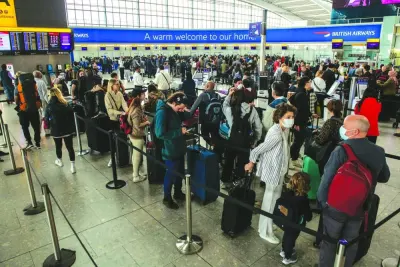Qatar Airways has more than 245 aircraft worth over $67.3bn still on order including options and letters of intent, according to the national carrier’s annual report for 2022/23.Its fleet and network continues to grow and position the group well for its future expansion plans. The current fleet includes 210 passenger aircraft, 30 cargo and 19 executive jets.In July last year, Qatar Airways and Boeing finalised an order of 25 737-10 aircraft, providing the airline’s short and medium-haul fleet with improved economics, fuel efficiency and sustainable operations.Qatar Executive became the world’s largest owner and single commercial operator of the Gulfstream G650ER with a total of 15 aircraft, in addition to two A319 aircraft and two Global 5000s.In the last financial year, Qatar Airways Group added seven new aircraft to its fleet, which included four Boeing 787-9 Dreamliner and three Qatar Executive Gulfstream G650ER jets.Additionally, the airline brought back in to service eight of its 10 Airbus A380s in order to increase the fleet capacity on routes with strong premium demand such as London Heathrow, Paris, Bangkok, Sydney and Perth.Qatar Airways uses modern fuel-efficient fleet, which has enabled the airline over the past few years to fulfil its commitment to connecting people globally.The airline said its “strategic investment” in technologically advanced aircraft has helped in maintaining agility when responding to opportunities and challenges.With capacity requirements meticulously planned, the airline continued to meet the increased passenger and cargo demand with adaptability and flexibility during the 2022/2023 financial year.During the last financial year, the airline continued to face considerable capacity limitations due to circumstances beyond the group’s control.These capacity constraints were addressed through a number of different initiatives to balance the business needs promptly.“As a global airline, we adapted our network to serve passenger demand and increase the sustainability of operations,” Qatar Airways noted.The national airline’s Qsuite business class is fitted to 74 of its wide-body aircraft across its Airbus A350 and Boeing 777 fleets and is available on the majority of the airline’s long-haul routes.Qatar Airways Cargo has maintained its position as the world’s largest air freight carrier through the 2022/2023 financial year, bringing great enhancements to its services and sharply accelerating its digital transformation.Qatar Airways Group continued with its strategy to hold a portfolio of investments in leading global airlines such as IAG, which is an Anglo-Spanish multinational airline, LATAM, Santiago, Chile-based airline, Hong Kong-based Cathay Pacific and China Southern airline.These investments contribute towards Qatar Airways Group’s long-term sustainability objectives and are in line with Qatar’s 2030 vision of sustainable development.

Pratap John
Pratap John is Business Editor at Gulf Times. He has mainstream media experience of nearly 30 years in specialties such as energy, business & finance, banking, telecom and aviation, and covered many major events across the globe.
Most Read Stories
3























